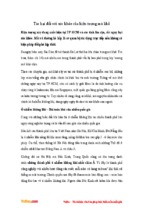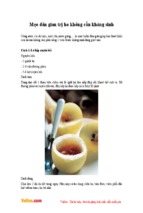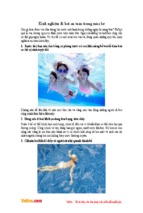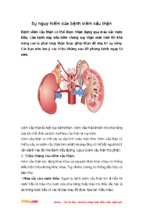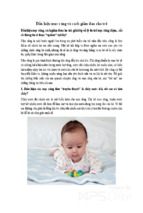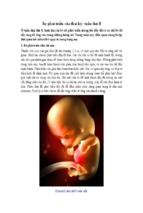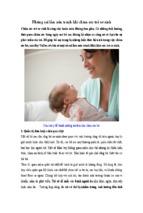Healthcare Delivery in the Information Age
Nilmini Wickramasinghe with
Latif Al-Hakim · Chris Gonzalez
Joseph Tan Editors
Lean Thinking
for Healthcare
Healthcare Delivery in the Information Age
For further volumes:
http://www.springer.com/series/8783
Nilmini Wickramasinghe with
Latif Al-Hakim • Chris Gonzalez • Joseph Tan
Editors
Lean Thinking for Healthcare
Editors
Nilmini Wickramasinghe
Epworth HealthCare & RMIT University
School of Business Information Technology
Melbourne, VIC, Australia
Chris Gonzalez
Department of Urology
Northwestern University
Chicago, IL, USA
Latif Al-Hakim
University of Southern Queensland
Toowoomba, QLD, Australia
Joseph Tan
DeGroote School Business
McMaster University
Hamilton, ON, Canada
ISBN 978-1-4614-8035-8
ISBN 978-1-4614-8036-5 (eBook)
DOI 10.1007/978-1-4614-8036-5
Springer New York Heidelberg Dordrecht London
Library of Congress Control Number: 2013947473
© Springer Science+Business Media New York 2014
This work is subject to copyright. All rights are reserved by the Publisher, whether the whole or part of
the material is concerned, specifically the rights of translation, reprinting, reuse of illustrations, recitation,
broadcasting, reproduction on microfilms or in any other physical way, and transmission or information
storage and retrieval, electronic adaptation, computer software, or by similar or dissimilar methodology
now known or hereafter developed. Exempted from this legal reservation are brief excerpts in connection
with reviews or scholarly analysis or material supplied specifically for the purpose of being entered and
executed on a computer system, for exclusive use by the purchaser of the work. Duplication of this
publication or parts thereof is permitted only under the provisions of the Copyright Law of the Publisher’s
location, in its current version, and permission for use must always be obtained from Springer.
Permissions for use may be obtained through RightsLink at the Copyright Clearance Center. Violations
are liable to prosecution under the respective Copyright Law.
The use of general descriptive names, registered names, trademarks, service marks, etc. in this publication
does not imply, even in the absence of a specific statement, that such names are exempt from the relevant
protective laws and regulations and therefore free for general use.
While the advice and information in this book are believed to be true and accurate at the date of
publication, neither the authors nor the editors nor the publisher can accept any legal responsibility for
any errors or omissions that may be made. The publisher makes no warranty, express or implied, with
respect to the material contained herein.
Printed on acid-free paper
Springer is part of Springer Science+Business Media (www.springer.com)
For our Families
Series Dedication
This series is dedicated to Leo Cussen:
Learned scholar, colleague extraordinaire,
and good friend.
Foreword
Healthcare, by all accounts, is fraught with problems and lack of sustainability
under the current circumstances. Service quality is perennially challenged.
Embracing IS/IT is a temptation (and deservedly so) as new application possibilities
are introduced at ever-increasing rates. However, simply dropping technology into
complex environments generally does not succeed. Numerous examples of unused
or under-used technology exist in the annals of healthcare. There is a wide range of
stakeholder considerations and sensitivities including an informed public with the
ability for comparison and contrast that warrants consideration.
This book artfully brings together a wide range of issues around a common
theme that is important to all of us—efficient yet quality healthcare—through application of lean thinking. Recognizing that the “majority of medical errors are caused
by faulty systems, processes, and conditions that lead people to make mistakes or
prevent them” sets the stage for innovative interventions. Bringing quality concepts
having originated in manufacturing (e.g. six-sigma) is novel. However, even though
the principles may be OK, people are different and transformation requires a fair
amount of interpretation, at least in practice. Machines don’t complain and, for better or worse, tend to consistently produce the same output. Such is not the case in
healthcare where circumstances resist being mechanized.
However, embracing a “sociotechnical” approach presents a solution strategy
and operational way forward that bridges technological capabilities with sensitivity
to human practice. The sociotechnical approach has a long history of application in
complex circumstances. Fundamentally, the approach centres around people and
embraces their knowledge and wisdom as well as their desires to make effective use
of technology, often in ways unimagined by its creators. Aspects of process and
social value are integral to productive application. The issues are many and varied.
Under these circumstances, lean thinking need not be devoid of human sensitivity
and quality can emerge in an efficient and caring fashion.
The parts and chapters in this book navigate and map this space in a comprehensive fashion that provides much for many. The first part on key concepts, tools, and
techniques provides a solid background for the second part emphasizing applications
vii
viii
Foreword
of lean thinking around the healthcare world. This is followed by the third part
which deals with macro issues and the fourth part dealing with micro issues.
Culminating with case studies in Part V effectively brings things to a close. Overall,
this is a book of interest to a broad readership crossing multiple disciplines and
areas of practice. I expect it to be well read.
City University, Hong Kong
Douglas R. Vogel
Preface
At a very fundamental level quality of care is about meeting the physical, psychological, and social expectations of patients who search for care. The American
Institute of Medicine (IOM) refers to quality of care as “the degree to which health
services for individuals and populations increase the likelihood of desired health
outcome consistent with current professional knowledge” (Kumpersmith 2003).
The term “health service for the individuals” in the definition is a reference to service quality as well as the link between service quality and patients, i.e. customers.
This link is further strengthened in this definition with the application of professional knowledge. In fact the link between quality and customers has been established in the healthcare industry as early as 1910. In 1910, the American surgeon,
Ernest Codman, developed the concept of “end result idea” in hospitals. The concept requires the following: “Every hospital should follow every patient it treats
long enough to determine whether the treatment has been successful, and then to
inquire ‘if not, why not’ with a view to preventing similar failure in the future”
(NCBI 2005). While initially this may not have been embraced readily (Who_
Named_It 2005), today, Dr. Codman is remembered as a guru for quality of care and
The Ernest A. Codman Award was created in 1996 to showcase the effective use of
performance measures and to encourage the quality of care. Ironically, in this same
year, the Advisory Commission on Consumer Protection and Quality in the Heath
Care Industry was established. The Commissions notes the following quality problems in hospitals (Advisory_Commission 1998):
1. Avoidable error: the report points out that too many Americans are injured and
died prematurely as a result of avoidable errors. The report claims that “from
1983 to 1993 alone, deaths due to medical errors rose more than twofold, with
7,391 deaths attributed to medication errors in 1993 alone”.
2. Underutilization of services: the report claims that millions of people do not
receive necessary care. It estimated that about 18,000 people die each year from
heart attacks because they did not receive effective interventions.
ix
x
Preface
3. Overuse of services: the claim was that millions of Americans receive healthcare
services that are unnecessary.
4. Variation in services: there is a continuing pattern of variation in healthcare services, including regional variations and small-area variations.
More recently, in 2000, IOM released its landmark report, entitled “To Err is
Human: Building a Safer Health System” (Kohn et al. 2000). This report concentrates on errors within the American healthcare systems and concludes that
majority of medical errors are caused by faulty systems, processes, and conditions that lead people to make mistakes or fail to prevent them. Moreover, the
report stresses that “when an error occurs, blaming an individual does little to
make the system safer and prevent someone else from committing the same
error (ibid)”.
About 15 months after releasing its landmark report on medical errors, the
IOM released its second report, titled “Crossing the Quality Chasm: A New
Health System for the 21st Century” (IOM 2001). This second report emphasizes a gap or “chasm” between the quality of care for the existing health system
and the expected quality of health that should be delivered and set forth a vision
for transforming quality of the health system. In consistency with the findings
of the Advisory Commission (Advisory_Commission 1998), the IOM report
calls for improvements in six dimensions of healthcare performance: safety,
effectiveness, patient-centeredness, timeliness, efficiency, and equity (Table 1).
It asserts that “those improvements cannot be achieved within the constraints of
the existing system of care” (Berwick 2002). In response to this challenge, the
Institute of Medicine (IOM) and the National Academy of Engineering (NAE),
released a third report, titled “Building a Better Delivery System: A New
Engineering/Health Care Partnership” (Reid et al. 2005). In an attempt “to
bridge the knowledge/awareness divide separating healthcare professionals
from their potential partners in systems engineering and related disciplines”, the
NAE/IOM study identifies system engineering applications that could contribute significantly to improvements in healthcare delivery and emphasizes that
tools transforming the quality and productivity performance of other large-scale
complex systems could also be used to improve healthcare delivery. The report
highlights the role of information and recognizes the importance of human factors techniques and the significance of adapting Toyota Production System
(TPS) concepts to healthcare performance. The TPS is a collection of ideas,
techniques, and procedures developed by Toyota mainly afterWorld War II. The
focus of TPS is to produce cars that satisfy customers and fits their requirements. The principles are producing cars with best quality at the lowest costs
and with shortest lead time through systematic elimination of waste and improving performance.
Given this growing importance placed on quality and value creation for healthcare delivery, coupled with the plethora of technology solutions now being developed that facilitate (or at least claim to facilitate) better healthcare delivery, we
believed it was timely to examine the issue of lean thinking for healthcare together
Preface
xi
Table 1 Six quality aims for the twenty-first-century healthcare system proposed by IOM (2001)
•
•
•
•
•
•
Safe—avoiding injuries to patients from the care that is intended to help them
Effective—providing services based on scientific knowledge to all who could benefit and
refraining from providing services to those not likely to benefit (avoiding underuse and
overuse, respectively)
Patient-centred—providing care that is respectful of and responsive to individual patient
preferences, needs, and values and ensuring that patient values guide all clinical decisions
Timely—reducing waits and sometimes harmful delays for both those who receive and those
who give care
Efficient—avoiding waste, including waste of equipment, supplies, ideas, and energy
Equitable—providing care that does not vary in quality because of personal characteristics
such as gender, ethnicity, geographic location, and socioeconomic status
Source: IOM (2001), pp. 5–6
with related and complementary concepts such as six sigma, kaizen, and constraint
management. Hence, together with our colleagues around the world, we set about
creating this magnum opus that serves to explore and present in one volume critical
issues relating to lean thinking and its application in a variety of healthcare contexts
in order to facilitate and enable superior healthcare delivery to ensue.
Introduction to Lean Thinking
During 1980s, Professors Womack and Jones of Massachusetts Institute of Technology
(MIT) conducted a 5-year project for studying TPS and publish their book, entitled
“The Machines that Changed the World” in 1990 and they coined the term “lean production” as synonymous to the TPS (Womack et al. 1990). The term “lean” is used
because the lean production uses less of everything compared to other production systems. Since its introduction, the concept of lean production has changed considerably
(Joosten et al. 2009). It is diffused from car industry to other manufacturing industry
and then to service industry (Hines et al. 2004). Originally, the application of lean at
Toyota was a process-oriented concept. Currently, lean extends beyond the original
Toyota operational shop floor concept to include “respect-for-human system” aspects
besides the technical aspects of the system under study (Joosten et al. 2009; Sugimori
et al. 1977). In other words, application of lean requires looking to the system as
“sociotechnical” system in which human factor engineering and technology plays the
central role. Womack and Jones (1996b, 2003) enhance further the “sociotechnical”
aspect of lean production through introducing five principles within which the customer value and waste reduction are the cores of the lean system (Joosten et al. 2009;
Womack and Jones 2003). Womack and Jones coin their principles with the term “lean
thinking” with emphasize to applicability of lean thinking to service industry including
healthcare services. Table 2 describes the five principles of lean thinking.
By definition, customer value is a reference to activities which from the viewpoint of the customer add value and the customer is ready to pay for (Womack and
Jones 1996a). Accordingly, activities of a process or system can be divided into two
xii
Preface
Table 2 The five principles of lean thinking (adapted from Inozu et al. 2012; Black 1984)
No.
1
Principle
Value
2
Value stream
3
Flow
4
Pull
5
Perfection
Meaning
Value is any activity, step, or event that improves the customer experience (Powell et al. 2009). This principle requires specifying the
values the customer actually wants in order to provide them
Value stream—steaming a process means mapping (dividing) activities
within the process. It may require dividing each activity to its
sub-activities or steps and so on. Value stream means that the
activities of a process should provide value. This requires streaming
the process into activities and then sub-activities/steps and identifying
those steps that add no value from the customer perspective (i.e.
waste) with the aim to eliminate them
The principle requires smoothing the flow of work, material, and
information. It may require redesigning the process to create continual
flow and eliminate bottlenecks
Align the supply of services or product with customer demand. Services
or goods are only provided upstream when the customer downstream
requests for them (Powell et al. 2009). It also means that all work,
material, and information should be pulled to perform tasks when
needed (Jones and Mitchell 2006)
This principle requires continual improvement such that each improvement in the process creates a platform for the next one (Jones and
Mitchell 2006)
main types of activities; value adding activities and non-value adding activities.
Value adding activities contribute directly to the production of products or services
while non-value adding activities do not make such contribution and, accordingly,
can be considered as waste that should be considered for possible reduction or elimination. Waste is anything other than the minimum amount of equipment, effort,
material, parts, space, and time, which are absolutely essential to add value to the
product [or service] (Cho and Makise 1980; Russell and Taylor 1999). There are
two kinds of non-value adding activities; activities add no value but are necessary
such as transportation and those activities that can be avoided and can be considered
as complete waste (Monden 1993). Lean thinking attempts to eliminate or reduce
waste by eliminating unnecessary non-value adding activities and reducing as much
as possible the necessary non-value adding activities. Literature specifies seven elements of waste (Ohno 1988). Table 3 provides description of the seven types of
waste with examples from healthcare services (Table 3).
The aim of lean thinking is to provide what the customer wants, quickly, efficiently, and with little waste (Jones and Mitchell 2006; Young et al. 2004). It aims
to substantially smooth the flow and drastically reduce waste and process variations
(Womack et al. 1990; Taj and Berro 2006; Reichhart 2007). From the customer’s
value perspective, waste is defined as the activity or activities that a customer would
not want to pay for, and that do not add value to the product or service from the
customer’s perspective (Shinohara 2006). Once waste has been identified in the current or existing state, a plan is formulated to eliminate this to attain a desired future
Lean principle
Value stream
Flow/value stream
Flow/value stream
Pull/value stream
Value, value stream, perfection
Value, value stream, perfection
Value, value stream, perfection
Waste element
1 Defect
2 Transportation
3 Motion
4 Waiting
5 Inventory
6 Over-processing
7 Overproduction
Effectiveness
Effectiveness
Efficiency
Patient-centred,
timely, efficiency
Timely, efficiency
Timely, efficiency
Quality aim
Safe, patient-centred
Comments/examples from healthcare services
A defect occurs when the output was not as intended or does not fit with the
requirements and specifications. It may require corrective action, or
repeating the activity. Examples include medical assessment errors,
adverse drug reaction, providing wrong drug, performing surgery on the
wrong side, and readmission patient because of wrong discharge
This is a reference to the movement of material and equipment. It includes
also the transportation of a patient from one place to another.
Transportation may be necessary and cannot be avoided but can be
considerably reduced using process re-engineering. For instance, having
preoperative area adjacent to operating room reduces considerably the
patient movement
It refers to the movement of medical staff to obtain material or information.
Electronic transferring the medical test results or x-ray images eliminate
the staff movement to obtain the results or images. Motion includes
extra effort and movement in performing action such as using arm and
shoulder rather arranging work place for less effort movement (human
factor engineering)
This includes any delay in performing an activity or waiting for an action to
occur. Examples include waiting for general practitioner, for medical
results, for trolley to move a patient, or for medical information
It refers to excess material stocks in a storage. For healthcare, it refers to
long waiting lists for surgery, medical assessments, or special treatments
Unnecessary repetition of an action. Examples include unnecessary
recounting instruments, requesting same information from a patient
several times, and receiving additional information which is not
required
Unnecessary reproduction of the same product/service: example, repeating
unnecessary x-ray or medical test, have unnecessary extra beds in
discharge room, and leaving lights and air conditioning switch on after
leaving offices
Table 3 The seven elements of waste (adapted from Inozu et al. 2012; Black 1984)
Preface
xiii
xiv
Preface
state in as effective and efficient a manner as possible. Lean Thinking provides the
following benefits (Jones and Mitchell 2006): improved quality and safety, improved
delivery, improved throughput—the same resources with higher efficiency, and
accelerating momentum—A stable working environment with clear, standardized
procedures creates the foundations for constant improvement.
Lean thinking comprises a set of approaches and techniques utilized to efficiently
reduce waste in a way that achieves the five principles of lean thinking. Some of
these approaches are old and developed during the second and third decades of
twenty-first century such as method study and work measurement (Barnes 1980)
while other approaches are recently developed such as Just-in-time (Womack et al.
1990) and process reengineering (Hammer 1990). The list of approaches and techniques is growing with the time. The main question that first needs to be answered
is which technique(s) is (are) most suitable to achieve the aim of lean thinking for
specific situation under study. However, lean thinking differs from other traditional
approaches in that:
1. It looks to the entire process rather than specific activity of it. Improving an
activity without addressing the whole process may not improve efficiency at all
(Jones and Mitchell 2006).
2. It aims to achieve the five principles of lean thinking.
In order to achieve lean principles, the commitment to create lean thinking culture should start at the very top management of the organization (Miller 2005),
keeping in mind that Lean “has to be locally led and be part of the organisational
strategy” (Jones and Mitchell 2006). From operational side, there is a need to integrate more than one approach to achieve the requirements for lean thinking. The set
of approaches may differ from one process to another. In addition, many approaches
may require adaptation in order to be integrated with other approaches.
Lean Thinking for Healthcare Services
The literature emphasizes the applicability of lean thinking to healthcare services
(Balle and Regnier 2007; Jones and Mitchell 2006; Young et al. 2004). Although
some healthcare professionals may argue that lean thinking is more suitable to manufacturing and does not translate well to healthcare services; Bowen and Youngdahl
(1998) show how it does apply to healthcare by providing theory, case studies, and
context for lean applications. Flinders Medical Centre, a medium-sized public sector teaching hospital in Adelaide, South Australia, has, for some time, been implementing lean strategies (King et al. 2006) and has been able to operate below its
budgeted costs (Jones and Mitchell 2006). Lean thinking has also been advocated in
the healthcare setting of the USA through the use of the Six Sigma methodology,
which in many ways resembles lean production techniques (Dahlgaard and
Dahlgaard 2006; Tolga Taner et al. 2007; Young et al. 2004). Other related literature
also reveals that the implementation of lean thinking brings benefit to healthcare
xv
Preface
Fig. 1 Lean principles and
aims of healthcare quality
(adapted from Inozu et al.
2012; Black 1984)
Safety
Value
Patient
Centered
Flow
Timely
Pull
Healthcare Quality Aims
Lean Thinking Principles
Effectiveness
Value
Stream
Efficient
Perfection
Equitable
(DeKoning et al. 2006; Jimmerson et al. 2005; Young and McClean 2008; Ahluwalia
and Offredy 2005). It has been emphasized that lean thinking provides the following
benefits (Jones and Mitchell 2006):
1. Improved quality and safety—fewer mistakes, accidents and errors, will result
and better quality goods and services will be produced.
2. Improved delivery—the work gets done faster.
3. Improved throughput—the same people, using the same equipment, find they are
capable of achieving much more results.
4. Accelerating momentum—a stable working environment with clear, standardized procedures creates the foundations for constant improvement.
The customers for healthcare services are mainly patients but also include society, government, or even the legislations. The quality aims proposed by IOM (2001)
comprises the main values required by the customers. Any activity or step that contradicts, prevents, or shifts attention from any of these aims is considered as nonvalue adding activity and should be targeted for elimination as required by value
stream principle. Perfection should be targeted to achieve all the quality aims. Lean
principles “flow” and “pull” deal with the healthcare quality aims “timely” and
“efficient”. All lean principles are patient-centred (Fig. 1).
Challenges Faced by Lean Thinking
Like any other improvement philosophies or approaches, lean thinking faces a range of
criticisms both from philosophical and practical perspectives (Hines et al. 2004; Powell
et al. 2009). Powell et al. (2009) list 13 particular challenges in applying lean thinking
xvi
Preface
in healthcare settings as identified by various authors. Most of these challenges are
similar to these challenges that have been facing manufacturing organizations before
or during the application of lean thinking. Having complex patient pathways in healthcare services is a factor that may contribute to the importance of applying lean thinking
rather than the opposite. Powell et al. (2009) state in their list that Just-in-time requires
demand prediction. This is not a true statement. The pull strategy of Just-in-time is
particularly designed to deal with real demand rather than predictions or forecasts
(Simchi-Levi et al. 2008). Nevertheless, the study of the NHS Institute for Innovation
and Improvement stresses demand on healthcare is mostly predictable with a range
(Westwood et al. 2007). The study emphasizes that it is the way the process is designed
and operated that causes any instability that is important to note.
Falling to understand the real challenges is one of the main reasons that limit the
application of lean thinking in healthcare services and in particular in areas such as
operating rooms or in dealing with the actual work of medical professionals.
Understanding these challenges allows us to adapt lean thinking to suit the healthcare settings. We should first look to the main differences between healthcare and
manufacturing settings. These differences are summarized below.
Differences Between Healthcare and Manufacturing Settings
Hospital and manufacturing production systems vary in a number of dimensions.
There are several reasons for the notion that the concept of lean thinking should be
adapted to fit the hospital system (Woodward-Hagg et al. 2007). Gong (2009) considers the work of Al-Hakim (2006) and lists major areas of differences between
manufacturing and healthcare settings. The differences include human involvement,
level of product uniformity, cycle time, waiting time, object behaviour, ease of performance measurement, and process effectiveness.
Advanced machinery could be designed and then skilled labour involvement
could be minimized in a manufacturing setting; whereas, in healthcare, involvement
of skilled professionals is necessary. In manufacturing, performance of workers in
the production process is easier to measure. In contrast, performance of professionals in the process is not easily measurable. Again, this is because healthcare professionals differ in skills and expertise, and it is hard to measure their effectiveness in
dealing with various complexities during operation processes. Also, products have
defined characteristics in manufacturing; however, in healthcare, since the level of
complexity and variability of activities is high, it is not always possible to predict
the degree of the success of surgery.
In addition, while products are uniform in manufacturing, every patient may
require a different service in healthcare. Even health problems that appear to be
similar could require a unique treatment. As a result, the designed process needs to
be modified to fit the circumstances of each particular patient. Also, unlike manufacturing products which have defined characteristics, patients’ behaviour is not
predictable and could vary substantially.
Preface
xvii
Table 4 Summary of differences between the manufacturing and healthcare services settings
(Gong 2009)
Organization type
Differences
Human involvement
Ease of performance
measurement
Process effectiveness
Product uniformity
Object behaviour
Cycle time
Non-added value
activity time
Information flow
Lean thinking in manufacturing
Automation is a major role to
reduce human involvement;
it reduces the need for high
skill and knowledge
Performance of workers in the
production process is easy
to measure
Process outcome is predictable
Lean thinking in healthcare
Skill, knowledge, and experience of
professionals play major role
Performance of professionals in the
process is not easily measurable
It is hard to predict the degree of the
success of healthcare service
Machine produces identical
It is difficult to perform a medical
products
operation (say surgery) that will
have exactly same output. In
addition, every patient requires
different service
Products have defined
Patients’ behaviour is not predictable
characteristics
and could vary
Cycle time of the production
Healthcare service cycle time could
could be precise and
vary and is difficult to determine
determined in advance
prior to the service
All types of inspection are waste In healthcare environment,
and should be reduced or
monitoring and testing are
eliminated
essential
Mainly depends on process flow Healthcare activities are
information-based activities
Further, production cycle time could be precise in a production setting, but it is
not possible to fix an operation time in healthcare as each service might be unique.
Also, zero waiting time could be targeted in a manufacturing environment; whereas
waiting time is not always a waste in healthcare. Sometimes it can even be considered as a value-added activity. If an operating theatre of the hospital is taken as an
example, an anaesthetist does the job mainly at the beginning of the operation,
while the other surgical team is involved in monitoring activities. In contrast, in a
production line of manufacturing, if a worker is waiting or monitoring a process, it
is considered as a waste that should be eliminated to improve efficiency (see Table 4
for summary of differences).
Considering that modern lean thinking deals with human factor aspects, most of
the main listed differences can be managed including human involvement, performance measurement, and object behaviour. Similar to any service process, information flow plays major role besides human (employees) involvement (Evans and
Lindsay 2008). Several important differences missed from the list of Gong (2009),
among them are that the patient (customer) is directly involved in the healthcare
services and the healthcare services are consumed and produced simultaneously
(Evans and Lindsay 2008). Another important difference missed from Gong’s list is
xviii
Preface
that the defect as a waste could result adverse event that is very costly and cannot
be rectified. Performing surgery in the wrong side (removing the wrong breast or
cutting wrong leg) cannot be rectified by performing corrective action or repeating
the wrong activity. Defect even can be vital and may lead to death. This is not the
case in manufacturing or other service settings. It is the value principle, particularly
safety factor, forms the main difference between healthcare and other settings. From
lean thinking perspective, value should be specified by customers. Value stream
should stream activities of the process throughout the patient journey within the
processes in order to identify non-value adding activities and eliminate or reduce
them. The quality aims provided by IOM (2001) specifies these values as shown in
Table 2. The first aim, i.e. safe, is specifically critical value from customer perspective. The safe principle may require changes in the definition of waste, in some
circumstances may be different from waste as defined for the purpose of applying
lean thinking settings other than healthcare service. For instance, monitoring may
be considered as waste from manufacturing perspective while it could be extremely
important in certain healthcare services such as monitoring patients inside intensive
care units. The position of the scrub table inside operating room is another example.
From manufacturing perspective, having scrub table near the door of the operating
room may have logistical advantage as there is wide range of circumstances in
which there are needs to bring sterilized materials or instruments from outside operating rooms to the table during surgery. Opening or closing OF doors may generate
airborne contamination. In addition, having scrub table near the door increases the
movements around the table and subsequently increases airborne contamination.
What could be considered as logistical waste from manufacturing perspective may
create value from healthcare perspective. This fundamental difference requires us to
look to value stream from customer value as specified by IOM (2001) and not by the
traditional perspective adopted for other settings. According to the NHS study
(Westwood et al. 2007), identifying the value stream means identifying the components of the patient journey which add value to their care. This can be done through
process mapping. Most current process mapping methodologies deal with work
flow and from which the information flow can be identified. These methodologies
are suitable for manufacturing as well as the majority of service settings. Healthcare
service is an information-based service (McLaughlin 1996). Accordingly, information flow plays a major role in healthcare services. This fact creates another major
difference with other setting where the work flow plays a major role. This fundamental difference leads us to search for methodology that first maps information
flow in order to identify the components of the process rather than the opposite.
Lillrank (2003) suggests that the primary problem in healthcare services is not the
quality of the actual implementation of the process, such as surgery, but the quality
of information that controls the process. The recognition of data and information
quality becomes a key area of both strategic and operations management in the
healthcare industry (Lorence and Jameson 2002). This adds another difference in
that the information quality and the quality of information flow play more superior
role than in manufacturing settings where machines, automation, and quality of
work flow are more important. Table 5 shows the main additional difference between
xix
Preface
Table 5 Additional difference between manufacturing and healthcare settings that requires
adaptation or more attention
Lean thinking
principle
Customer value
Issue
Customer
involvement
Waste: defect
Waste: definition
Value stream
Consumption
Basis of the
processes
Quality
Process mapping
Flow
Priority
Manufacturing settings
Customers are not involved
in manufacturing the
product
Defect in manufacturing is
rectifiable. It may
require repletion of the
process
Waste is any activity or
activities that a
customer would not
want to pay for, and that
do not add value to the
product or service from
the customer’s
perspective
Products are produced and
consumed at a later
stage
Work-based process
Healthcare settings
Customers are directly
involved in producing the
services
Defects could result adverse
event that is very costly
and cannot be rectified
Similar definition. However,
the activities which may
be considered waste in
manufacturing setting
may not be considered
waste from healthcare
perspective
Products are produced and
consumed
simultaneously
Information-based process
The primary quality
The primary problem in
problem in manufacturhealthcare services is not
ing settings is the
the quality of the actual
quality of the final
implementation of the
product
process but the quality of
information that controls
the process (Lillrank
2003)
Requiring methodology
Requiring methodology that
that first maps the
first maps the information
components of work
flow in order to identify
flow
the components that add
value
Priority is given to work
Priority is given to informaflow
tion flow
healthcare and manufacturing settings that needs further attention and more adaptation from lean thinking perspective.
Applications of Lean Thinking in Healthcare Services
As the proceeding has hopefully highlighted the area of lean for healthcare is both
broad and rich. Given the importance for healthcare delivery today to grapple with
challenges such as escalating costs, demands for high-quality care, ageing
- Xem thêm -

